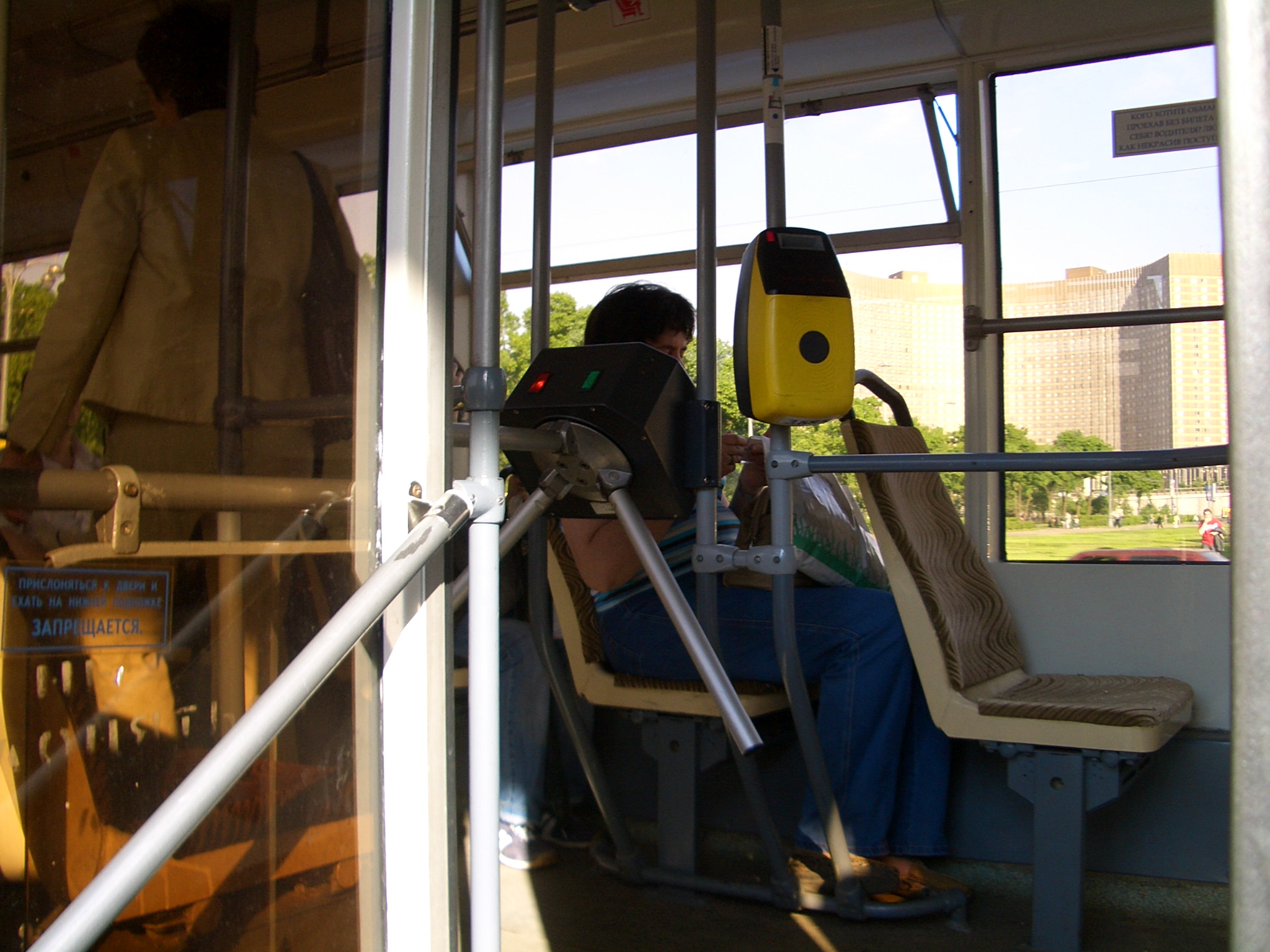- Turnstile
A turnstile, also called a baffle gate, is a form of
gate which allows one person to pass at a time. It can also be made so as to enforce one-way traffic of people, and in addition, it can restrict passage to people who insert a coin, a ticket, a pass, or similar. Thus a turnstile can be used in the case of paid access (sometimes called a faregate when used for this purpose), for examplepublic transport as a ticket barrier or apay toilet , or to restrict access to authorized people, for example in the lobby of an office building.History and applications
Turnstiles were originally used, like other forms of
stile , to allow human beings to pass whilst keeping sheep or other livestock penned in. The use of turnstiles in most modern applications has been credited toClarence Saunders , who used them in his firstPiggly Wiggly store.Turnstiles often use ratchet mechanisms to allow the rotation of the stile in one direction allowing ingress but preventing rotation in the other direction. They are often designed to operate only after a payment has been made, usually by inserting a
coin or token in a slot; or by swiping, or inserting, a paper ticket or electronically encoded card.Turnstiles are often used for counting the numbers of people passing through a gate, even where payment is not involved. They are used extensively in this manner in
amusement park s, in order to keep track of how many people enter and exit the park and ride each ride. The first major use of turnstiles at a sporting venue was atHampden Park inGlasgow ,Scotland . It is common for entry to public lavatories in theUnited Kingdom to be controlled by turnstiles.HEET turnstiles
The High Entrance/Exit Turnstile (HEET), a larger version of the turnstile, similar in operation to a
revolving door , is known as an "iron maiden", after the medieval torture device of the same name, or as "high-wheel". [ [http://www.barrypopik.com/article/1098/iron-maiden-or-heet-high-entranceexit-turnstile missing HEET] ] It is sometimes called a "Rotogate", especially in Chicago, where they are used at unstaffed exits of their El stations. [http://www.transitchicago.com/downloads/brochures/securebro.pdf] In Europe, however, "Rotogate" refers to a different kind of gate that is not a turnstile.Turnstiles in Russia
thumb|right|Instead of enclosing all bus and streetcar stops and providing them with faregates, Moscow authorities in the early 2000s resorted to installing turnstiles inside each bus and streetcar, right inside thefront door.In the public transportation systems of the
Soviet Union , the only common use of turnstiles was at the entrance to subway stations (first introduced inMoscow Metro on November 7, 1958 [ [http://www.mosmetro.ru/pages/page_0.php?id_page=71 Timeline (ХРОНОЛОГИЯ)] (Moscow Metro official site, accessed 2006-Nov-03)] ). City buses and commuter trains usually operated on thehonor system . But as fare collection became a more pressing businessin post-Soviet Russia, railway terminals and high-traffic railway station in theMoscow area,Nizhny Novgorod and elsewhere had turnstiles installed.In the early 2000s, Moscow authorities went one step further in their quest to improve fare collection: since enclosing all bus and streetcar stops and providing them with fare gates would not be feasible, the authorities resorted to installing turnstiles "inside" each
city bus andstreetcar . This practice has caused numerous passenger complaints as it reduced the speed of boarding, compared to the traditionalhonor system .ee also
*
optical turnstile References
External links
* [http://www.nycsubway.org/tech/fare/ Page showing various designs of turnstiles] in the history of the New York subway system.
Wikimedia Foundation. 2010.

